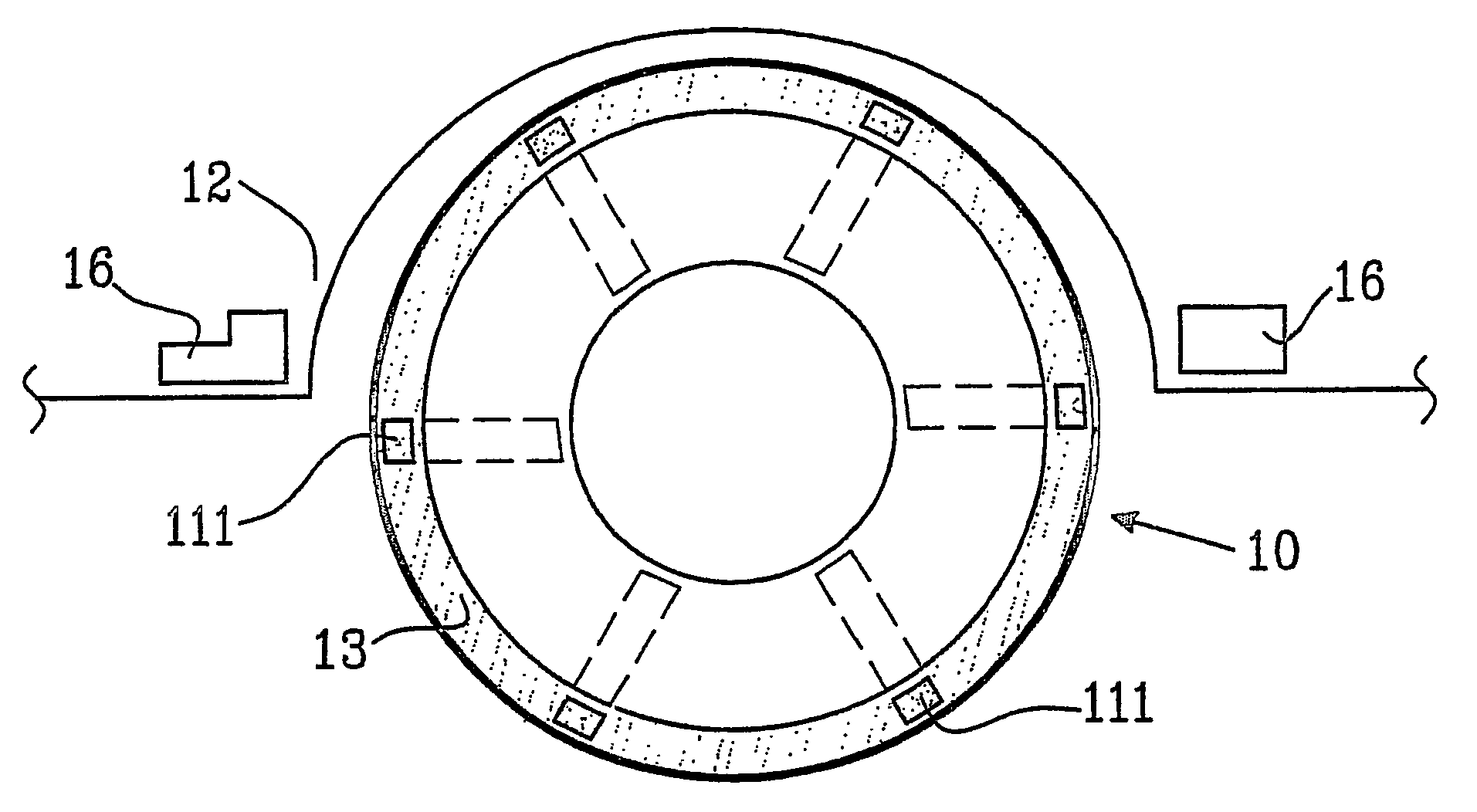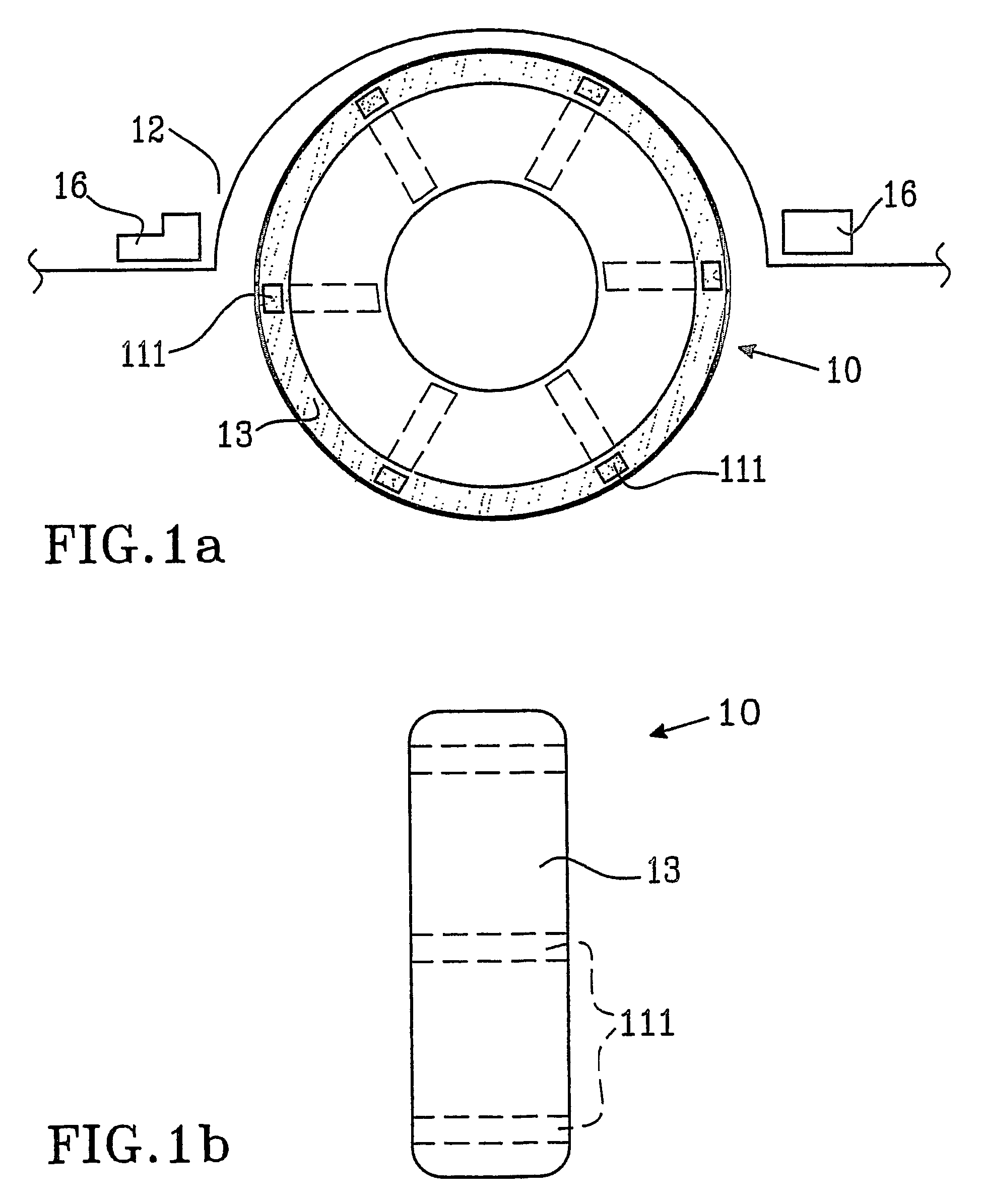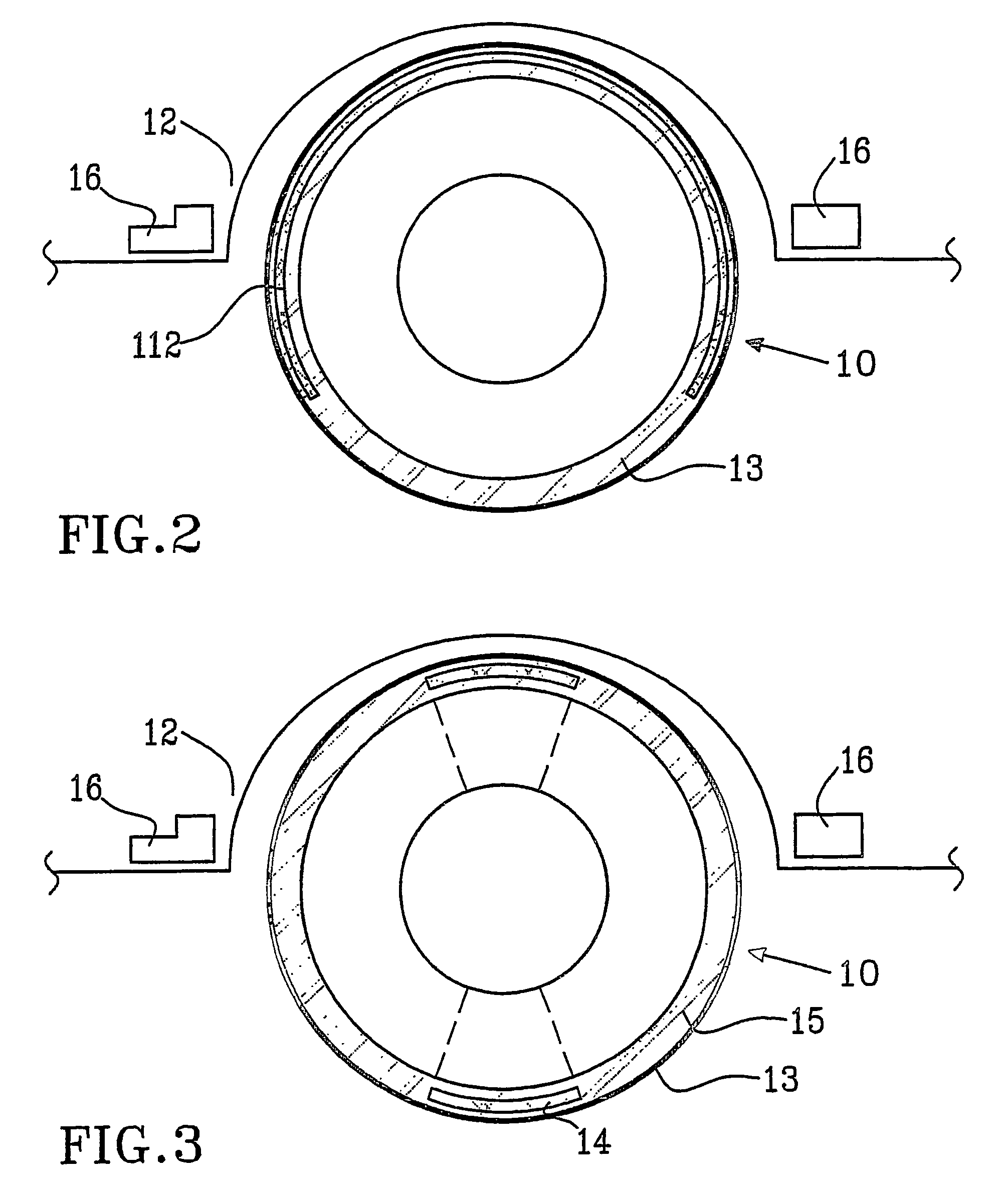Sensor arrangement
a technology of sensors and tyres, applied in the direction of electrical/magnetic measuring arrangements, tyre parts, tyre measurements, etc., can solve the problems of deterioration of the characteristics and functions of different structures, and achieve the effect of less expensive and larger tensions and effects
- Summary
- Abstract
- Description
- Claims
- Application Information
AI Technical Summary
Benefits of technology
Problems solved by technology
Method used
Image
Examples
second embodiment
[0046]However, on the contrary, the sensor 112 in the second embodiment as shown in FIG. 2, elongates during the time the part of the tyre that contains the sensor has contact with the ground. During that time interval, an electric signal is created. The linear velocity of rotation can be obtained if the length of the strip is known simply by dividing this length by the duration of the voltage / current pulse.
[0047]Additional information is provided by the frequency at which the pulses occur due to the rotation of the vehicle. Both are related to each other and to the linear velocity of tyre motion. The difference in linear velocity of the tyre calculated from the pulse duration and from the frequency of tyre rotation (which is proportional to the angular speed of tyre rotation from which linear velocity of tyre motion can be calculated assuming certain tyre diameter, for example the diameter the tyre has at an appropriate air pressure) using appropriate software should be constant. W...
third embodiment
[0050]In the invention, the sensor 14 is arranged inside the tyre material, see FIG. 3. In this case, the sensor 14 is made of a magnetic material, which is dispersed and disintegrated in the material of the tyre 13, and preferably arranged, in a top layer of the tyre 13. The magnetic sensors 14 are arranged spaced apart (distance 15) inside the material of the tyre 13. As the tyre 13 wears out results are: (1) the amount of the magnetic material decreases, and (2) the distance between the tyre 13 and a preferred detector means, which detector means is to be explained in the following.
[0051]In all aforementioned embodiments, one or several detector means 16 for detecting the sensors 111, 112 and 14 (or a signal from the sensors) are arranged and generate a signal. Preferably, the detectors 16 are arranged inside a wheel housing in a conventional vehicle close to the tyre 13. Advantageously, two detectors 16 are arranged on each side of the tyre 13 to be measured, and at a specified ...
fifth embodiment
[0067]In a fifth embodiment, which is shown in FIG. 5a, two rolls 33 are preferably arranged in a printer application 20 for feeding paper sheets (or other information carrier). At least one sensor 331 is arranged on the surface of the printing paper, or substantially within the printer paper 32. In the preferred embodiment, the sensor 331 comprises a foil integrated substantially inside the paper 32. At least one detector 516 can be arranged to detect the presence of the sensors.
[0068]In this case, the movement is indicated in form of, e.g. Interruptions in the printer, which are possible to predict if the velocity of a paper moving through the printer rolls and the velocity of the printer rolls are known.
[0069]Yet another preferred embodiment in form of a banking paper application for the feeding of bank notes, paper money or the like is shown in FIG. 5b, which is principally designed as the printing application described above. The difference is that at least one sensor 312 is ar...
PUM
 Login to View More
Login to View More Abstract
Description
Claims
Application Information
 Login to View More
Login to View More - R&D
- Intellectual Property
- Life Sciences
- Materials
- Tech Scout
- Unparalleled Data Quality
- Higher Quality Content
- 60% Fewer Hallucinations
Browse by: Latest US Patents, China's latest patents, Technical Efficacy Thesaurus, Application Domain, Technology Topic, Popular Technical Reports.
© 2025 PatSnap. All rights reserved.Legal|Privacy policy|Modern Slavery Act Transparency Statement|Sitemap|About US| Contact US: help@patsnap.com



